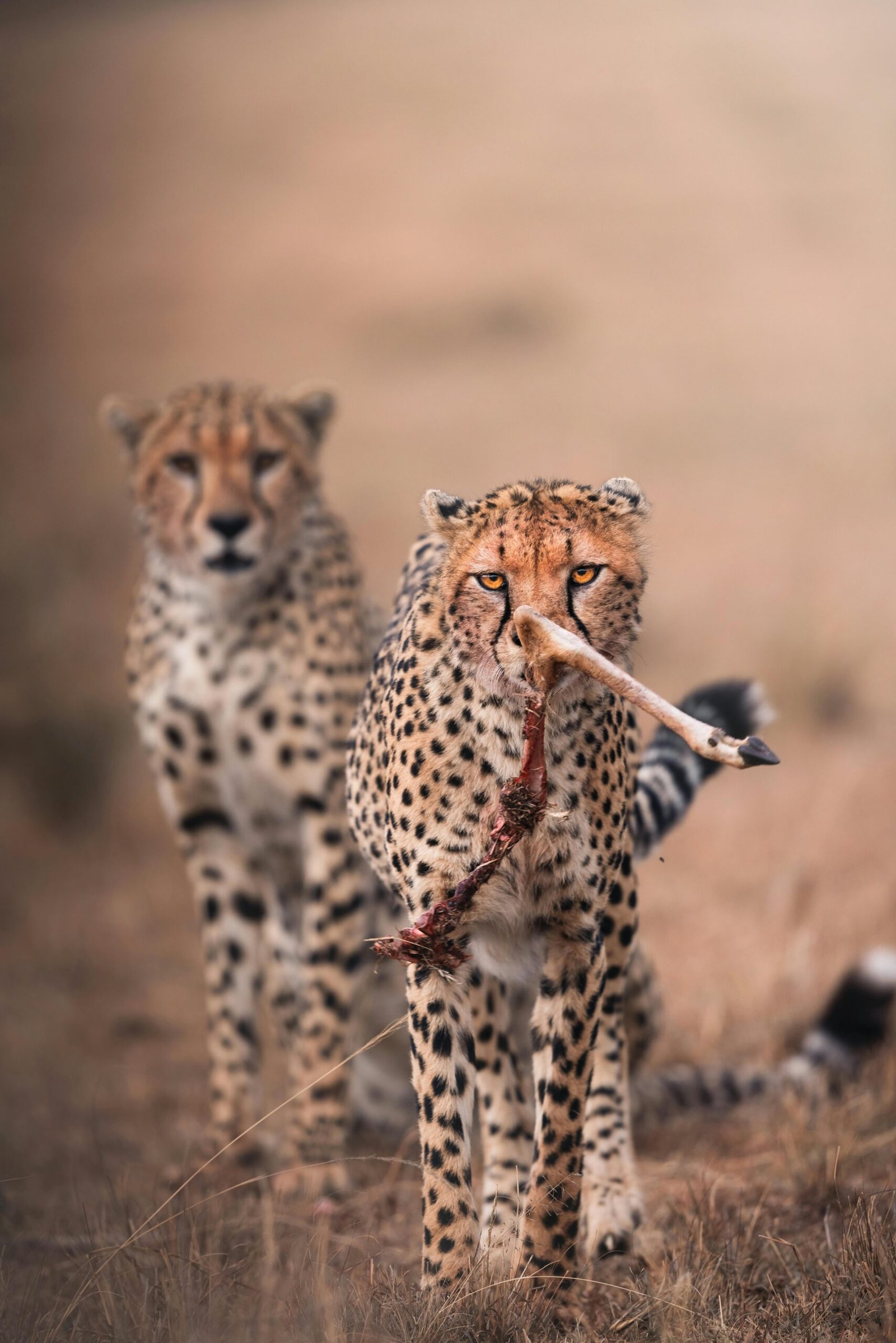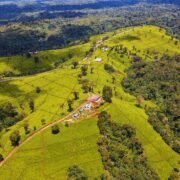
Exploring Maasai Mara: Pricing Your Safari Adventure in Kenya
Introduction to Maasai Mara
Maasai Mara in Kenya stands as one of the foremost wildlife reserves in Africa, renowned for its rich biodiversity and unparalleled safari experiences. Covering approximately 1,510 square kilometers, the reserve is named after the indigenous Maasai people, who have inhabited the area for centuries. The Maasai Mara is part of the larger Serengeti ecosystem and is distinguished by its vast savannahs, riverine forests, and rolling grasslands, making it an ideal habitat for diverse wildlife.
One of the remarkable features of the Maasai Mara is the annual Great Migration that takes place between July and October. During this period, millions of wildebeest and thousands of other animals make the perilous journey from the Serengeti in Tanzania to the greener pastures of Maasai Mara, in search of water and food. This natural spectacle not only attracts wildlife enthusiasts from around the globe but also provides a unique opportunity to witness predatory behaviors as the Big Five—lion, leopard, elephant, buffalo, and rhinoceros—actively hunt during this time.
Beyond its wildlife, the Maasai Mara serves as a vibrant cultural hub where visitors can engage with the pastoral Maasai tribes. These communities provide insight into their traditional ways of life, deeply rooted in their connection with the landscape and the animals that inhabit it. Tourists traveling from Nairobi to Maasai Mara will often partake in cultural interactions, allowing them to appreciate both the ecological significance of the reserve and the rich heritage of its indigenous people.
For those considering a trip to Maasai Mara, various options exist to experience the beauty of the reserve while accommodating different budget constraints. Safari low-cost options are available, making the reserve accessible to a larger audience willing to explore the natural wonders and cultural treasures of this spectacular destination in Kenya.
Types of Safari Experiences
The Maasai Mara in Kenya offers a plethora of safari experiences, each catering to different preferences and desires of wildlife enthusiasts. One of the most popular ways to explore this stunning reserve is through traditional game drives. These drives typically occur in open-top vehicles, allowing visitors to witness ‘The Big 5’ up close: lions, elephants, leopards, buffalos, and rhinoceroses. With experienced guides at the wheel, travelers can enjoy the thrill of spotting these majestic animals while learning about their habitats and behaviors.
Another rewarding option is walking safaris. While they may not appeal to everyone, these excursions allow participants to immerse themselves in the natural surroundings of the Maasai Mara. Accompanied by knowledgeable guides, hikers can observe smaller wildlife and learn about the flora and fauna of the region. Walking safaris offer a unique perspective, emphasizing the delicate balance of the ecosystem—a far cry from the typical experience of a game drive.
For those seeking a more leisurely yet breathtaking view of the Mara’s landscapes, hot air balloon rides provide an unforgettable experience. Floating above the savannah, passengers can view wildlife from a stunning vantage point, followed by a celebratory breakfast upon landing. This option is often incorporated into safari packages, making it an ideal addition to any trip to Maasai Mara.
Luxury tented camps are another significant aspect of the safari experience in Maasai Mara. These camps offer comfortable accommodations and cater to travelers looking for an upscale experience without sacrificing the wild spirit of a safari. Many of these camps are strategically positioned to enhance wildlife viewing opportunities and provide remarkable sunset vistas. As visitors explore the reserve through various activities, they can be assured that every moment in the Maasai Mara is designed to enrich the overall adventure.
Factors Influencing Safari Prices
When planning a trip to Maasai Mara in Kenya, one must consider various factors that influence safari prices. The time of year significantly impacts costs; safaris typically have peak and off-peak seasons. Peak season, marked by the Great Migration of wildebeest, usually occurs between July and October, when higher demand leads to elevated prices. Conversely, low season, running from April to June and November to mid-December, often sees reduced rates, making it an ideal time for budget-conscious travelers seeking a safari low cost Kenya.
Another crucial aspect is the type of accommodation chosen for your safari. Options range from luxury lodges offering high-end amenities to budget campsites. The quality and services provided at these establishments vary greatly, which directly affects the overall price of the safari package. Those opting for a more luxurious experience may find that while the costs are higher, the amenities offered can enhance their trip to Maasai Mara substantially.
The length of stay also plays a vital role in determining safari prices. Generally, longer trips may enjoy discounted rates per day, while shorter stays could incur higher daily rates. This factor necessitates careful planning, especially for those wanting to experience the full thrill of the big 5 safari.
Finally, inclusions within a safari package also determine pricing. Packages that encompass meals, guided tours, and transportation, such as transfers from Nairobi to Maasai Mara, add substantial value. Understanding these elements will empower travelers to make informed decisions tailored to their preferences and budget, ensuring an enriching safari experience without compromising on quality.
Budgeting for Your Maasai Mara Safari
When planning a trip to Maasai Mara in Kenya, budgeting is essential to ensure a fulfilling experience meets your financial expectations. The costs associated with a safari can vary widely based on the type of accommodations chosen, transportation, meals, and the entry fees required for the park. Understanding these expenditures will help travelers make informed decisions that cater to their respective budgets.
Accommodations in Maasai Mara can range from luxury lodges to budget camping options. On average, luxury lodges can cost between $300 and $800 per night, while mid-range accommodations may vary from $150 to $300. For budget-minded travelers, there are camping sites available that charge approximately $50 to $100 per night. These options not only lower the expenses but also immerse visitors in the natural surroundings, enhancing the overall safari experience.
Transportation is another significant aspect of budgeting. The primary routes for accessing Maasai Mara include travel from Nairobi to Maasai Mara, which can be done via road or air. A round trip by road can range from $120 to $300 depending on the type of vehicle and number of passengers. Alternatively, domestic flights are available, with prices starting at around $200 to $500. It’s advisable to book in advance, especially during peak seasons.
Meals can also accumulate costs, particularly within lodge stays where full-board packages may apply. Budget travelers can plan to spend around $15 to $30 per day on meals outside of lodges, depending on the dining choices. Furthermore, park entry fees generally amount to $80 per day for non-residents, contributing to an overall budget.
For safari enthusiasts seeking low-cost options, considering group tours and package deals focusing on the big 5 safari can be economical. By exploring alternative strategies and making informed choices, planning an unforgettable journey to Maasai Mara can be feasible for any budget.
Choosing the Right Safari Package
When planning a trip to Maasai Mara in Kenya, one of the most crucial steps is selecting the right safari package that aligns with personal preferences and budget. The diversity of safari experiences available makes this decision paramount. Prospective travelers should consider whether they prefer a group safari or a private safari, as each option has its own benefits and drawbacks. Group safaris tend to be more economical and provide travelers the opportunity to meet like-minded individuals, thus enhancing the social aspect of the adventure. These tours usually cater to larger crowds, which can sometimes result in a less personalized experience but nonetheless, offer an affordable way to engage with the marvels of the Maasai Mara.
On the other hand, private safaris offer a more tailored experience. This type of excursion allows for greater flexibility in itinerary planning and provides personalized attention from the guide. Consequently, it may come at a higher price point, and thus it is vital to evaluate personal budgets and decide what type of experience is desired. Additionally, when embarking on a safari low cost in Kenya, it is essential to research various tour operators. Comparing the offerings, services, and reviews will help in making an informed decision.
Potential visitors should seek out reputable operators that specialize in trips to Maasai Mara, ensuring they deliver quality experiences and have a good safety record. Engaging with past customers and analyzing their feedback can be invaluable. When comparing options, travelers should assess aspects such as the type of accommodation included, the duration of the safari, and other activities offered within the package. Ultimately, choosing the right safari package not only enhances the experience in Maasai Mara but also ensures a memorable adventure while partaking in the exhilarating quest to view the Big 5 safari species.
Best Times to Visit Maasai Mara
Maasai Mara in Kenya offers a variety of unique wildlife experiences throughout the year, but certain periods stand out for optimal viewing opportunities. The Great Migration, a phenomenon where millions of wildebeests and zebras traverse the plains in search of greener pastures, is a major highlight that draws numerous visitors. This extraordinary event typically occurs between July and October, providing safari enthusiasts with the chance to witness not only the migration but also the spectacle of predators such as lions and crocodiles taking advantage of this journey. Timing your trip to Maasai Mara specifically during these months can significantly enhance your chances of experiencing this natural marvel.
In addition to the Great Migration, the months of January to February are also ideal for visiting Maasai Mara. During this time, the weather in the area tends to be warm and relatively dry, making wildlife spotting easier. This period is particularly fruitful for observing young animals, as many species give birth at this time. Consequently, visitors on a safari low cost Kenya itinerary can find ample opportunities to see these newborns and their protective mothers. Furthermore, the moderate temperatures also make for a comfortable experience, ideal for taking part in various wildlife activities.
The rainy season, which generally spans from March to May, is a less popular time to visit due to heavy rainfall leading to muddy roads, potentially hampering wildlife viewing and safari experiences. However, this period could offer lower prices for those seeking a more budget-friendly trip to Maasai Mara. Regardless of the season, planning ahead and choosing the right time can greatly influence the overall experience, ensuring that your adventure in this stunning region is memorable.
Wildlife Diversity in Maasai Mara
One of the most compelling reasons to embark on a trip to Maasai Mara in Kenya is its extraordinary wildlife diversity. This renowned national reserve stands as a testament to the rich biodiversity that the African continent has to offer. Nestled in the Great Rift Valley, the reserve is home to an array of species, making it a prime destination for both seasoned travelers and first-time visitors.
The Maasai Mara is perhaps best known for its representation of the ‘Big Five’ safari animals: lions, leopards, rhinoceroses, elephants, and buffalo. These majestic creatures are not only a draw for tourists but also play crucial roles in the ecosystem. The lions, for instance, are apex predators that help to maintain the balance of herbivore populations, while elephants are known as ecosystem engineers, shaping the land and facilitating the growth of new vegetation by uprooting trees. Spotting these animals in their natural habitat enhances the safari experience, providing firsthand insight into their behaviors and interactions.
In addition to the Big Five, Maasai Mara boasts an extensive variety of other species, including cheetahs, hyenas, giraffes, zebras, and an impressive collection of bird species. The annual Great Migration, where millions of wildebeest and other animals traverse between Masai Mara and the Serengeti, adds to the dynamic wildlife scene. Observing this migration is a highlight of any visit, showcasing the natural rhythms of life in the savannah.
Aside from the thrill of encountering these magnificent creatures, the ecological importance of this diversity cannot be understated. Each species plays a role in sustaining the environment, ensuring a balance that allows for the preservation of the Maasai Mara’s delicate ecosystems. A safari low cost Kenya can still provide unforgettable experiences with nature, allowing travelers to appreciate the wildlife and understand the conservation efforts aimed at protecting this iconic destination.
Cultural Encounters with the Maasai People
One of the most enriching aspects of a trip to Maasai Mara in Kenya is the opportunity to engage with the indigenous Maasai people. Known for their vibrant culture and rich traditions, the Maasai offer visitors a unique insight into their way of life, making safaris in this region about more than just spotting wildlife. Including cultural experiences in your itinerary enhances your adventure and supports the local community economically.
A visit to a traditional Maasai village offers guests the chance to learn about the customs, music, and daily routines of the Maasai. Visitors can participate in various activities such as bead-making, which is a significant part of Maasai culture, or witness traditional dances that celebrate life milestones and community gatherings. These dances, often performed by both men and women adorned in their iconic red shuka, resonate with the spirit of the Maasai and provide a memorable glimpse into their cultural heritage.
Not only do these interactions enhance your understanding of the Maasai community, but they also provide an avenue for sustainable tourism. Participating in organized cultural encounters ensures that a portion of the funds go directly to the communities you visit, helping to maintain their ways of life and supporting local economies. This approach aligns well with the rising trend of safari low cost Kenya, where budget travelers seek meaningful experiences that have a positive impact.
Moreover, visiting Maasai villages can serve as an educational experience for travelers, emphasizing the importance of wildlife conservation and the Maasai’s role in preserving their natural environment. As you transition from the thrill of the big 5 safari to the warmth of the Maasai community, it becomes evident that this blend of nature and humanity enriches one’s safari journey significantly.
Conclusion: Planning Your Safari Adventure
Embarking on a safari trip to Masai Mara in Kenya is an exhilarating experience that offers more than just breathtaking landscapes. It represents an opportunity to witness some of the most iconic wildlife in their natural habitat, including the revered Big 5—lions, elephants, buffalos, leopards, and rhinoceroses. As you plan your safari adventure, it is essential to take into account various factors affecting the pricing and overall experience.
First and foremost, determining your budget is crucial. Safari low cost options are available if you seek to experience the majesty of Masai Mara without the hefty price tag associated with luxury tours. Many travel agencies provide affordable packages that include transportation from Nairobi to Masai Mara, accommodation, and guided game drives. Ensuring your safety and comfort while prioritizing cost-effectiveness will lead to an enriching experience.
Moreover, pick a time that aligns with your wildlife viewing preferences. The annual wildebeest migration, typically occurring between July and October, draws crowds but is a spectacle worth witnessing. Therefore, securing accommodations in advance during peak seasons can help mitigate costs while guaranteeing a spot in this remarkable location. Also, be prepared for variances in pricing based on accommodation types, park entry fees, and guided tour costs.
Ultimately, planning your safari adventure in Masai Mara requires thoughtful consideration of your desires and financial boundaries. By taking the time to evaluate your options, you can ensure that your trip to Masai Mara is both memorable and rewarding. From the rich cultural experiences to the awe-inspiring wildlife encounters, a well-organized safari can create lasting memories that resonate for years to come.






